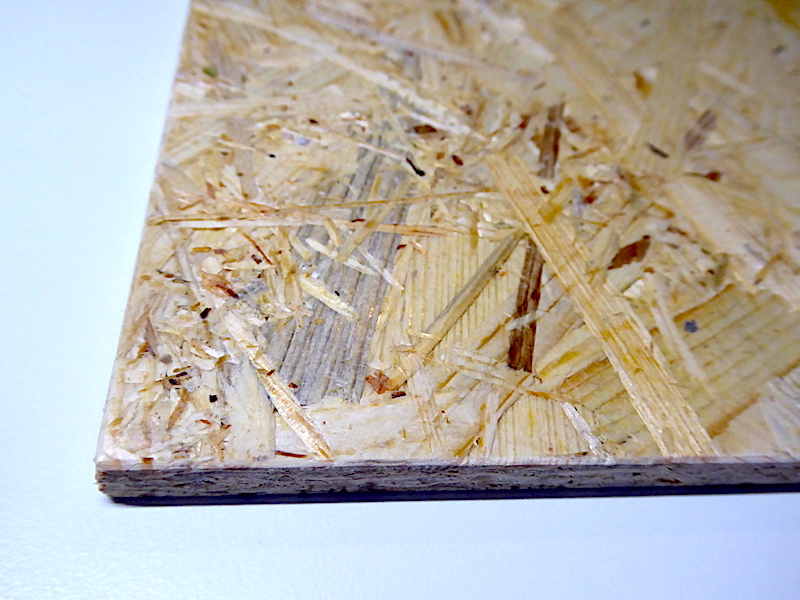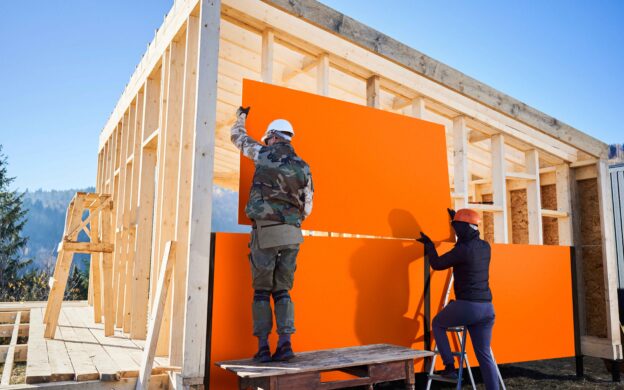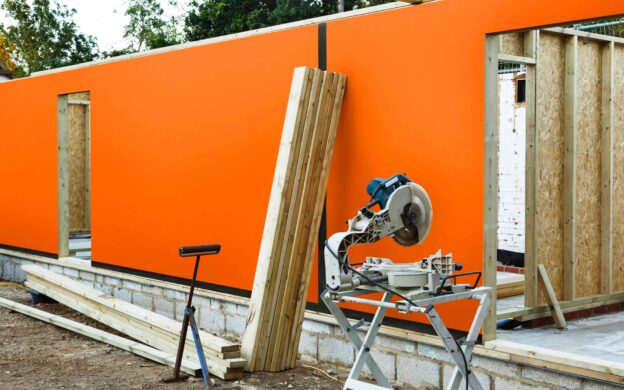
For internal applications OSBs can be plastered, but this is not always necessary. It can also be tiled or wallpapered, although a primer might be required for these finishes. The familiar and striking look of OSB has become popular in contemporary design and we often see the exposed boards with varnish, oil or wax finish used as feature walls and floors.
Moisture resistance, smoothness and surface compatibility are the main areas of concern when finishing OSB. Moisture resistance is especially important if the OSB is used in external wall sheathing or in rooms with higher humidity such as bathrooms and kitchens. If using water-based paints, it is recommended the surface is primed or weatherproofed to prevent moisture ingress.
OSBs are manufactured from cross-oriented strands of wood that are compressed and bonded with resin. This means that the OSB surface is structured, and no two boards are the same. Additionally, the resin may cause compatibility issues with the quality of adhesion of some roofing finishes. Sanding and priming are just some of the ways this can be addressed.
We mentioned that as an alternative to painting, priming, and sanding the surface of the OSB manually, the board can be enhanced with Arctek performance overlay technology. The high-performance overlay solution by Arclin can be specified as a coloured finishing surface, moisture defence or primer. The overlay is formulated to the client requirements and thermally fused with the board during the manufacturing process, saving time and resources.
Should you prime OSB before painting?
Unless you are looking to use the raw aesthetics of OSB, sanding and priming the surface will be needed to achieve a smoother look that is homogenous across all boards. As the OSB board does not sand well, it is recommended that multiple coats of primer or paint are applied, and each is sanded. It should be noted that sanding may not be sufficient to achieve flat surface smoothing and so a filling compound could need to be applied.
Arctek performance overlay technology by Arclin, a high-performance overlay solution, can improve the surface of an OSB without the time consuming and laborious preparation. The overlay technology is bonded with an OSB during manufacture to achieve a smooth, uniform surface. If required, the overlay solution can be specified as a primer and can also come in a variety of textures and be embossed if the design requires it.
Can you use OSB outside if painted?
Painted OSB can be used for external applications, but it is worth remembering that paint alone will not protect the product from moisture that may warp or fray the board or cause it to lose its structural integrity. Although OSB rated 3 and above has a level of moisture resistance, it is not designed to withstand prolonged exposure to moisture or high humidity.
The moisture vapour barrier that Arctek performance overlay technology provides, protects the board from moisture ingress. This means the boards can be used for external applications. The proprietary solution by Arclin enhances the weather performance of OSB whilst unaffecting its characteristic qualities. The finishing of the board can be carried out as planned or additional colour or texture overlay can be included to speed up the installation.
To find out more information on how Arclin’s Arctek performance overlay technology can improve the performance of OSBs and help achieve design and colours to suit, contact us.


